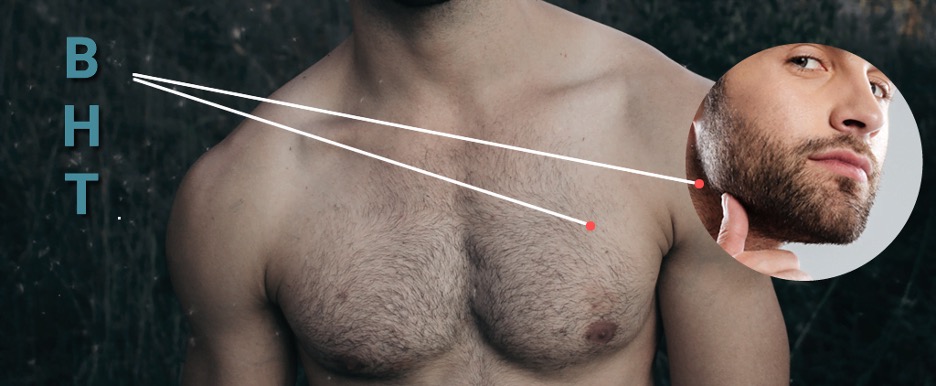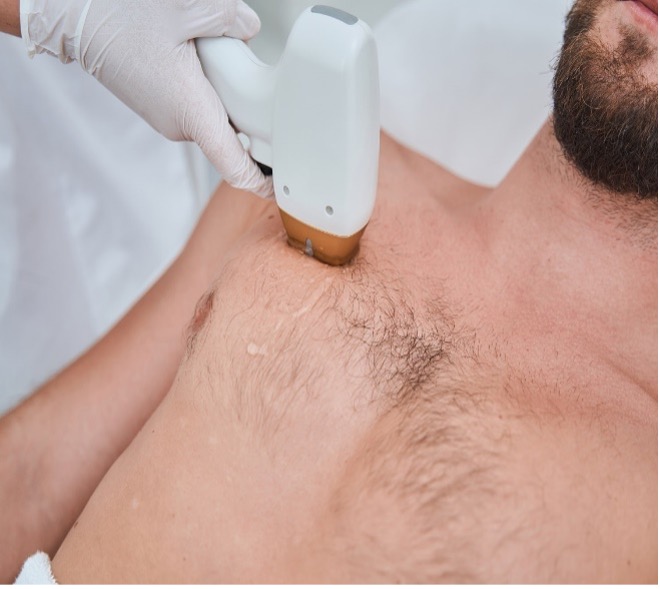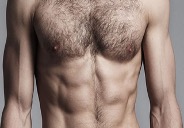Body Hair Transplantation
Body hair transplant can involve relocating body hair to the scalp or transplanting scalp hair to other areas of the body. Relocating body hair to the scalp is typically used only as a salvage option to correct a bad hair transplant, as the results are often not convincingly natural-looking and do not provide the desired density. The FUE technique is commonly used to remove individual chest hairs for the procedure. On the other hand, transferring hair from the scalp to the chest is typically done using the FU-strip method. Me4Men is experienced in corrective procedures involving the use of body hair as an additional donor area for hair transplants and has a strong record of helping patients achieve their desired outcomes.

When donor hair from the scalp has been depleted due to multiple prior hair transplant procedures, the beard and chest hair can serve as alternative donor sources. For scalp hair restoration, beard hair is preferred over chest hair for a few reasons.
Firstly, beard hair typically has better thickness than chest hair when restoring hair density on the scalp. Secondly, when transplanted to the scalp, beard hair grows more consistently, longer, and faster than chest hair. Thirdly, beard hairs recover better with no visible hypopigmentation.
Therefore, chest hair should only be utilized in the absence of beard hair or when it is inadequate. In summary, exploiting body hair for scalp hair restoration should be a last-ditch effort to repair a poorly conducted scalp hair transplant procedure when no other donor hair source is left.
Beard and chest hair can be used for a hair transplant when the donor hair on the scalp has been depleted due to multiple prior procedures 12. It is generally preferred to use beard hair as the non-scalp source, as the hair typically has a more favorable thickness and consistency and tends to grow longer and faster when transplanted to the scalp than chest hair. Additionally, hairs transplanted from the beard usually heal well and do not result in noticeable hypopigmentation, while chest hair is more likely to cause this side effect. However, if beard hair is unavailable or depleted, chest hair can be used as a secondary option to restore scalp hair density. Body hair transplant should generally only be considered as a last resort for cases such as correcting poor hair transplants when all other donor options have been exhausted.


PREPARATIONS FOR BODY HAIR TRANSPLANTATION
- Following a body hair transplant, the donor sites may display small red or white dots, with the chest area more commonly producing visible hypo pigmented (lighter-colored) scars than the beard area. However, it is usually possible to maintain your preferred facial hair style (like a goatee, full beard, or mustache) as only the hairs below the chin (in the neck region) are typically harvested for the transplant
- After a hair transplant, the transplanted hair should start growing in about 4 to 6 months and continue to improve in growth for up to 12 or more months following the procedure

